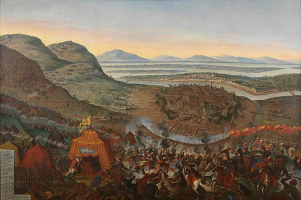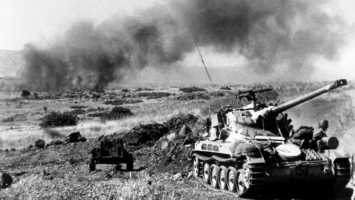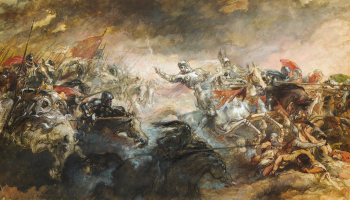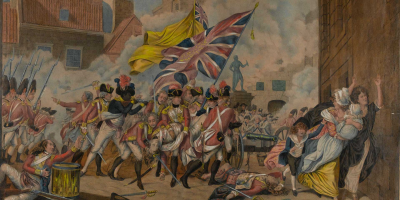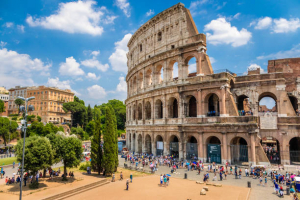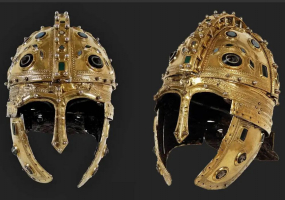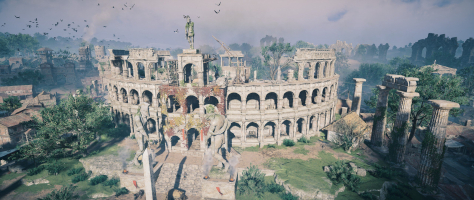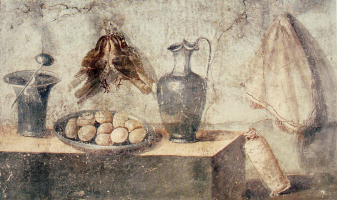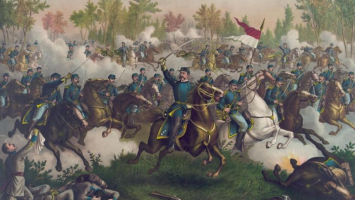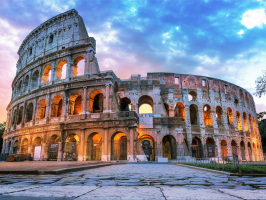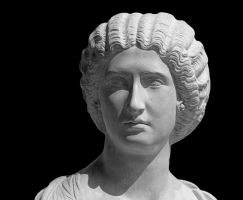Top 6 Civil Wars That Transformed Rome
Rome was the most powerful empire in all of antiquity, and at its height it controlled the majority of continental Europe, Britain, much of western Asia, ... read more...northern Africa, and the islands in the Mediterranean. The Ancient Roman empire experienced multiple civil conflicts in addition to countless exterior warfare. The biggest and most damaging Civil Wars that transformed Rome are listed here.
-
It was one of the numerous conflicts that occurred in Rome between 88 and 87 B.C. and is also referred to as Sulla's first civil war which is one of the Civil Wars that transformed Rome. One of the first battles that eventually brought about the demise of the Roman Republic was this internal dispute. Gaius Marius and Lucius Cornelius Sulla, the two opposing rulers of Rome, had a terrible rivalry that led to war.
A brutal power struggle between the politician-generals Gaius Marius and Lucius Cornelius Sulla led to Rome's first civil war. Years of animosity between the two men culminated in war in 88 B.C. when Marius outsmarted Sulla to gain control of the Roman troops in a battle with King Mithridates of Pontus. Marius had earlier claimed credit for one of Sulla's military victories. Sulla gathered his men and led them on a march on Rome, furious at having missed his chance at glory. No army had ever entered the city armed before, thus it was a contentious act, but Sulla quickly swept aside Marius' supporters and drove his competitor to flee to Africa.
Sulla assembled his soldiers and set off after King Mithridates after consolidating his hold on Rome. After he left the city, the civil war broke out once more. Sulla's upper class "Optimates" and the plebian "Populares" group engaged in a bloody conflict, and Marius emerged from hiding to retake the city and govern it as a tyrant.
Sulla was compelled to march his 40,000 men back toward Rome. He established himself as dictator and murdered hundreds of opposition politicians and aristocrats after routing an army led by Marius' son (Marius having since passed away from old age). Sulla eventually resigned and entered retirement voluntarily in 79 B.C., but his short-lived power grab damaged the Roman Republic's foundations. Only a few more decades would pass before they started to fall apart.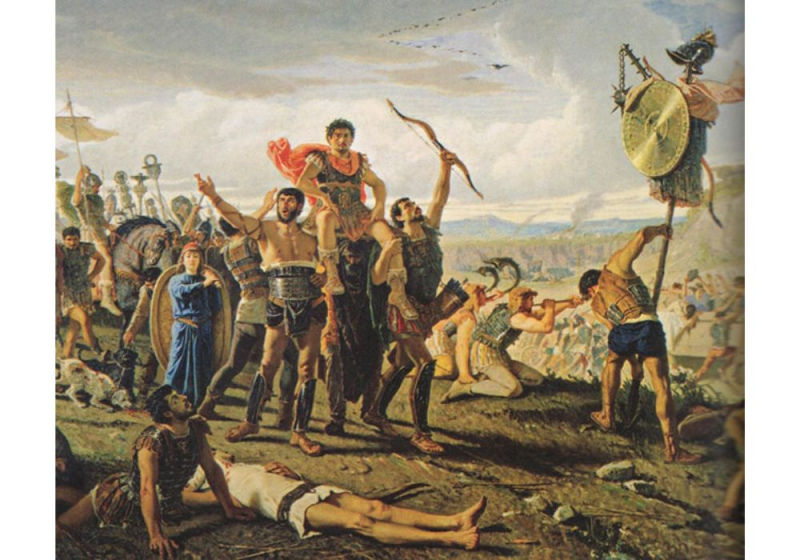
Photo: History Hit 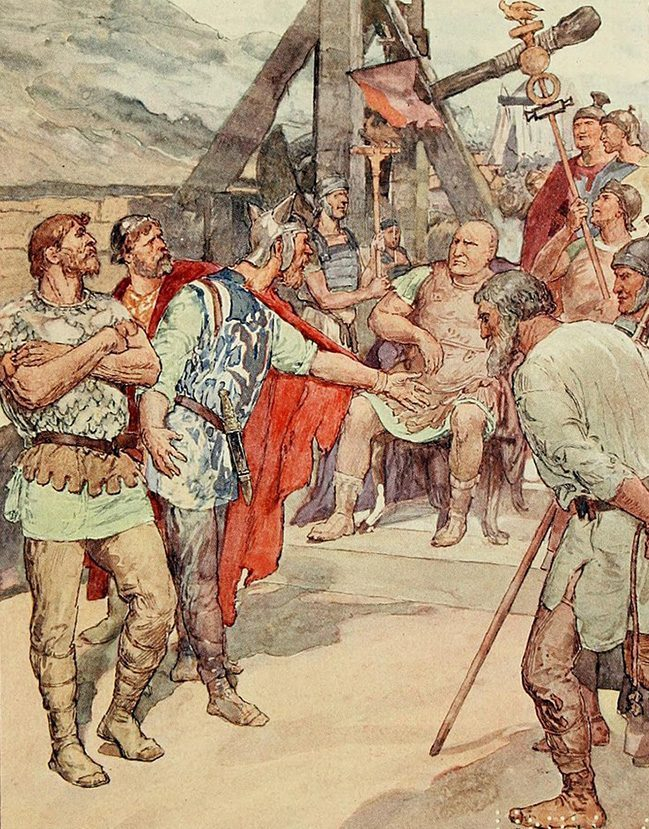
Photo: History Hit -
Julius Caesar was faced with a choice in 49 B.C. The great commander had just returned from a brilliant military battle in Gaul, but their long-standing friendship had deteriorated into a savage rivalry. The demands of the Pompey-allied forces in the Roman Senate to dissolve his army and go home as a civilian were even more strong. Caesar wouldn't act in such a way. He rallied his troops, crossed the Rubicon into Italy, and declared, "The die is cast," sparking a civil war.
Caesar's allies and Pompey's army engaged in conflicts in Italy, Spain, Greece, and North Africa over the course of the ensuing months. At the Battle of Pharsalus in 48 B.C., Caesar outwitted a Pompey-led army despite having much less soldiers, marking a significant turning point. After the defeat, Pompey escaped to Egypt only to be betrayed and killed by the country's youthful monarch. With Pompey dead, Caesar’s victory was all but sealed. Early in the year 44 B.C., Pompey returned to Rome and was installed as the city's permanent dictator after vanquishing the last of Pompey's friends there and in Spain. His time in power would be brief. On March 15, the infamous Ides of March, a group of Roman senators assassinated Julius Caesar.
Caesar's influence and appeal posed a danger to the Senate. As a result, the Senate, particularly Cato the Younger, decided to remove him from his position as governor. Caesar was forced to cross the Rubicon with armies and troops despite his best efforts to negotiate and renegotiate. It amounted to a declaration of war in this way. He declared, "The die is cast," and then he marched on Rome.
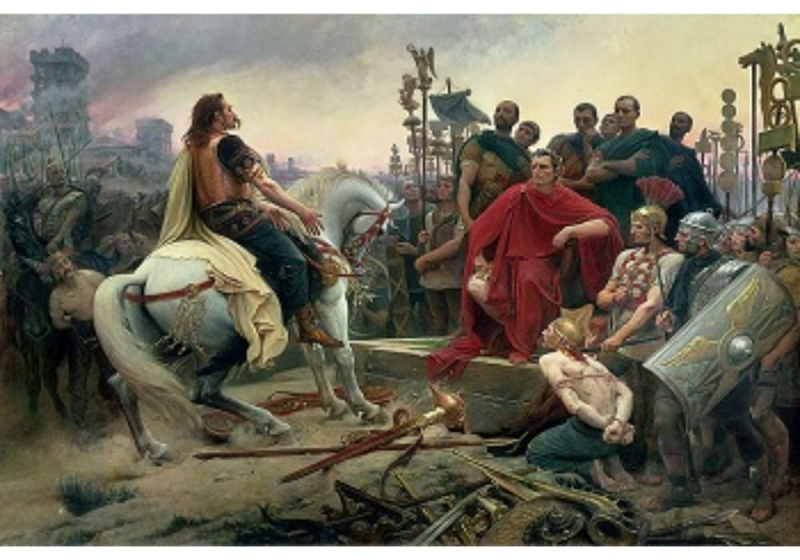
Photo: Study.com 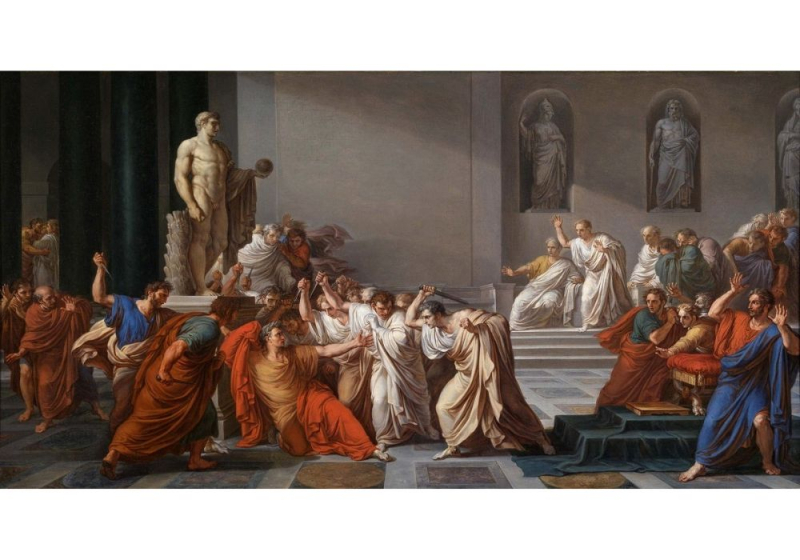
Photo: We Are The Mighty -
Although the assassins of Julius Caesar may have thought they were preserving the Roman Republic, their acts unintentionally led to its total dissolution. Following a period of unrest and civil conflict brought on by the murder, Caesar's son Octavian and his general Marc Antony emerged as the leading candidates to rule Rome. In the Second Triumvirate, the two had formerly been allies, but by 32 B.C., their shared ambitions and Antony's scandalous relationship with Cleopatra had caused them to split. The stage was prepared for Rome to engage in a winner-takes-all conflict when Octavian convinced the Senate to declare war on Cleopatra.
After months of scheming, the forces of Octavian, Antony, and Cleopatra ultimately clashed at the Actium naval battle in 31 B.C. Despite having a few more ships available, Antony was outmatched by Octavian's talented general, Agrippa. He abandoned a portion of his fleet as the war turned against him and escaped to Alexandria with Cleopatra. A year later, the two lovers killed themselves, allowing Octavian to take control of the faltering Roman Republic. Under the honorary name "Augustus", he would go on to rule as Rome's first emperor.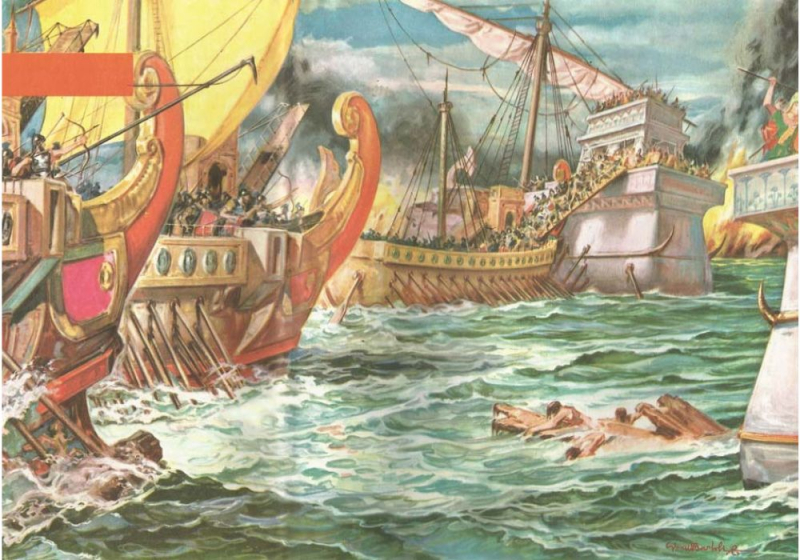
Photo: The Worlds of David Darling 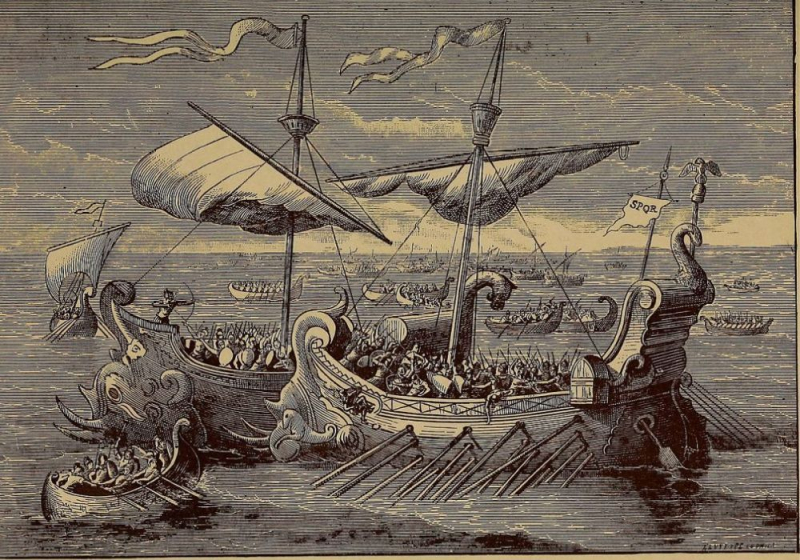
Photo: Brewminate -
The youthful Roman Emperor Alexander Severus was killed by his soldiers in 235 A.D. while on an expedition along the Rhine. The timing of the coup was terrible. Increased attacks by barbarian tribes were already placing a strain on Rome, and the sudden political unrest sparked a period of civil war that almost brought the Empire to its knees.
The Roman crown was usurped during the course of the following 35 years by a rotating cast of several dozen generals and usurpers, almost all of whom perished in conflicts with their foes or were murdered by their own troops. The internal strife coincided with a horrifying plague epidemic, rising Goth, Persian, and other external threats, and made circumstances worse.
The Empire momentarily split into three states as the chaos increased. Emperor Aurelian later drove Rome's adversaries beyond the frontier and recaptured its lost lands, restoring unity, but after his death, things returned to turmoil. The dilemma wouldn't be entirely resolved until Diocletian implemented a series of revolutionary reforms that separated Rome into an Eastern and Western Empire, each of which was governed by a tetrarchy of four leaders - two senior "Augusti" and two lesser-ranking "Caesars".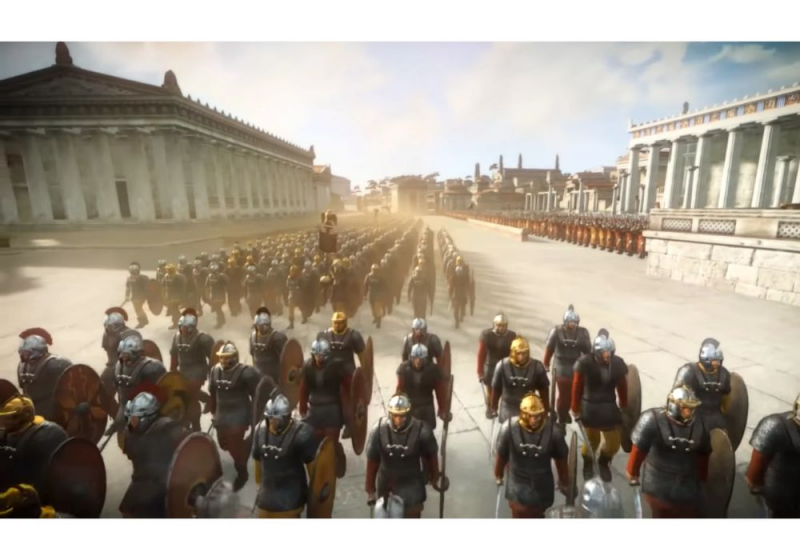
Photo: Historica Wiki - Fandom 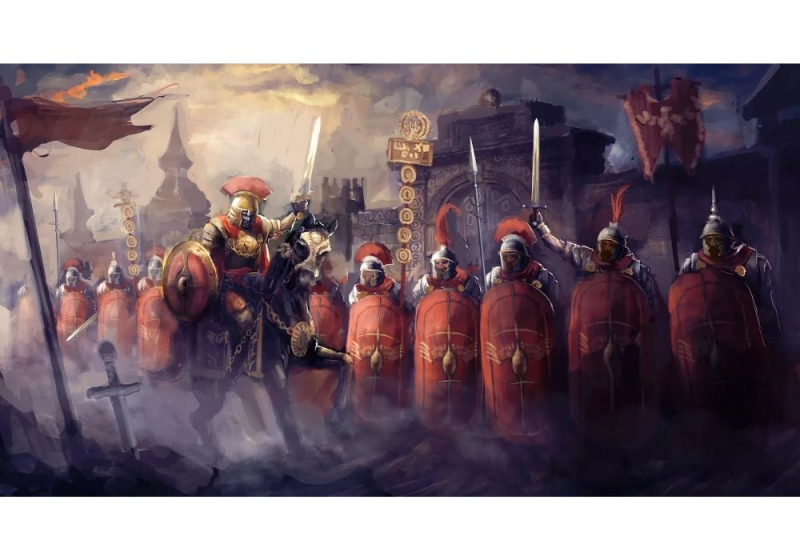
Photo: Wondrium Daily -
In the short term, Diocletian's tetrarchy made Rome easier to rule, but having numerous emperors was also a formula for civil war. The first significant issue arose in A.D. 306, when the usurper Maxentius - the son of a previous ruler by the name of Maximian - joined forces with the Praetorian Guard to establish himself as the Roman emperor. When Maxentius summoned his much-revered father out of retirement to govern with him, the Western Emperor Severus promptly marched on the city to challenge him. However, his army deserted him and he was killed as a result.
Rome's leadership deteriorated over the following few years, becoming entangled in a labyrinth of plots, intrigue, and pretenders to the throne. There were once no fewer than six guys who called themselves "Augustus." When the Emperor Constantine entered Italy over the Alps and killed Maxentius at the Battle of the Milvian Bridge in 312, the plotting eventually broke out into open warfare.
After forming an alliance with Licinius the Emperor, Constantine later turned against him and started yet another civil war. When the smoke eventually cleared in 324, Constantine was the sole ruler of both the Western and Eastern Roman Empires and the Tetrarchy was no more. He was the first emperor to convert to Christianity, opening a new chapter in Roman history, although the stability was only fleeting. Rome was divided into an eastern and western empire just a few decades after his passing.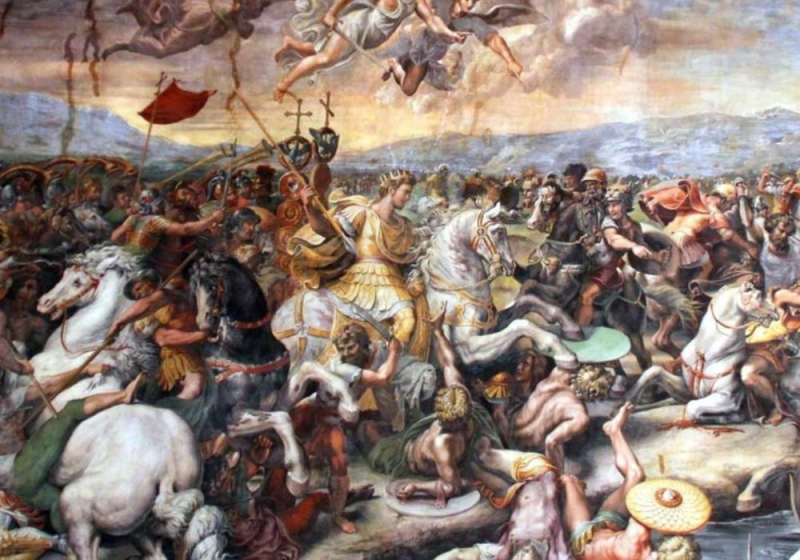
Photo: Historica Wiki - Fandom 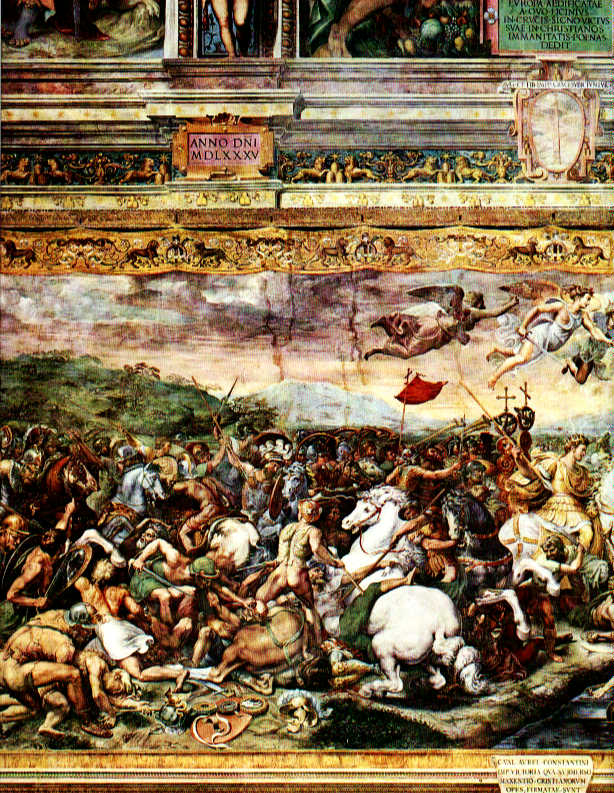
Photo: Wikipedia -
Another Civil War that transformed Rome, the Battle of Munda, is where Caesar's Great Civil War ends. It was his last effort to seize control of the Senate. Before he finished his valiant conquest of Rome, he commanded 13 legions and more than 70,000 troops. Pompey's sons, Gnaeus and Sextus, carried on his mission after his death. When Caesar acted to revolt, they captured Cordoba, Spain. At Munda, the Pompeians took a commanding position and profited from it.
In order to trick his adversaries into going downhill, Caesar shrewdly avoided going upward. While the latter was in charge of eight units and 8000 horse riders, the former aggressor had thirteen legions, 6000 infantry soldiers, and roughly 6000 horse riders. Titus Labienus, the commander of the Pompeian army, noticed the movement and moved a few soldiers to the rear. The other Pompeian legions recognized this as a retreat, nevertheless.
They were already deteriorating at the left and right sides when the misunderstanding caused them to break apart. As a result, following this battle, Caesar was proclaimed Dictator in Perpetuity, and Gnaeus and Sextus escaped.
Despite being killed in 44 B.C., he made a significant impact on Rome. Whether for the better or worse, he undoubtedly transformed the Roman Republic into the Roman Empire.
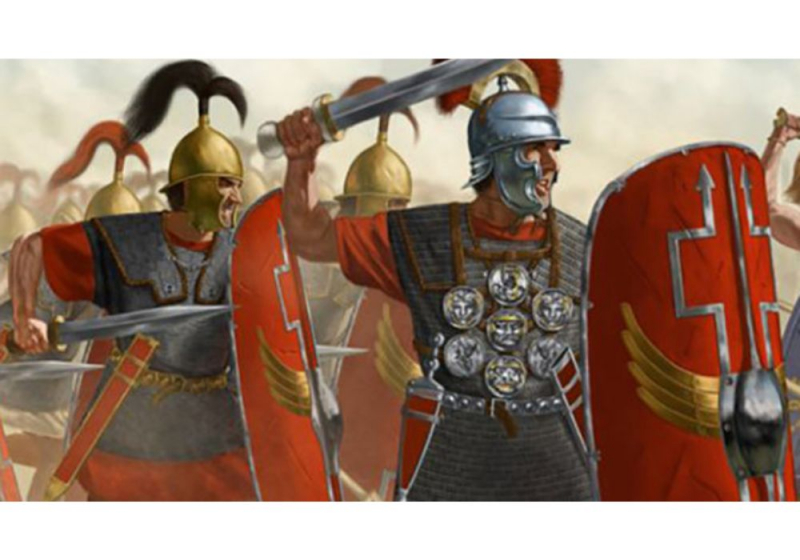
Photo: Battles of the Ancients 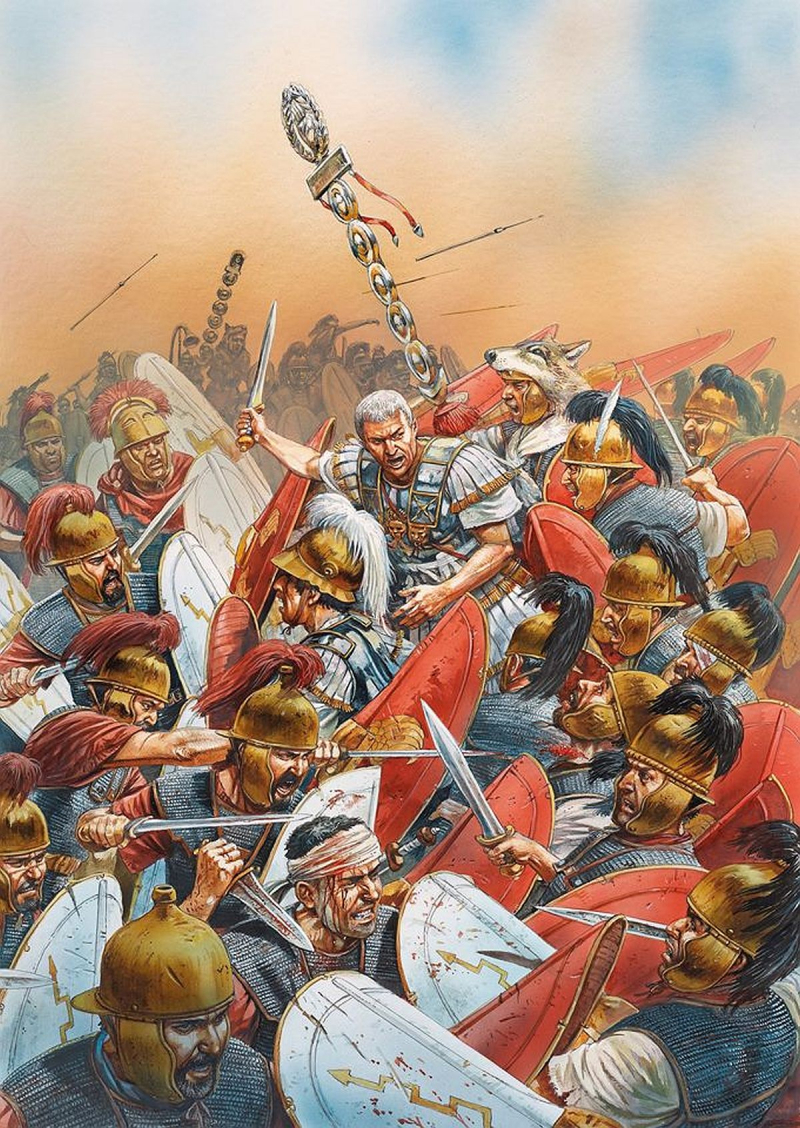
Photo: IMPERIUM ROMANUM









